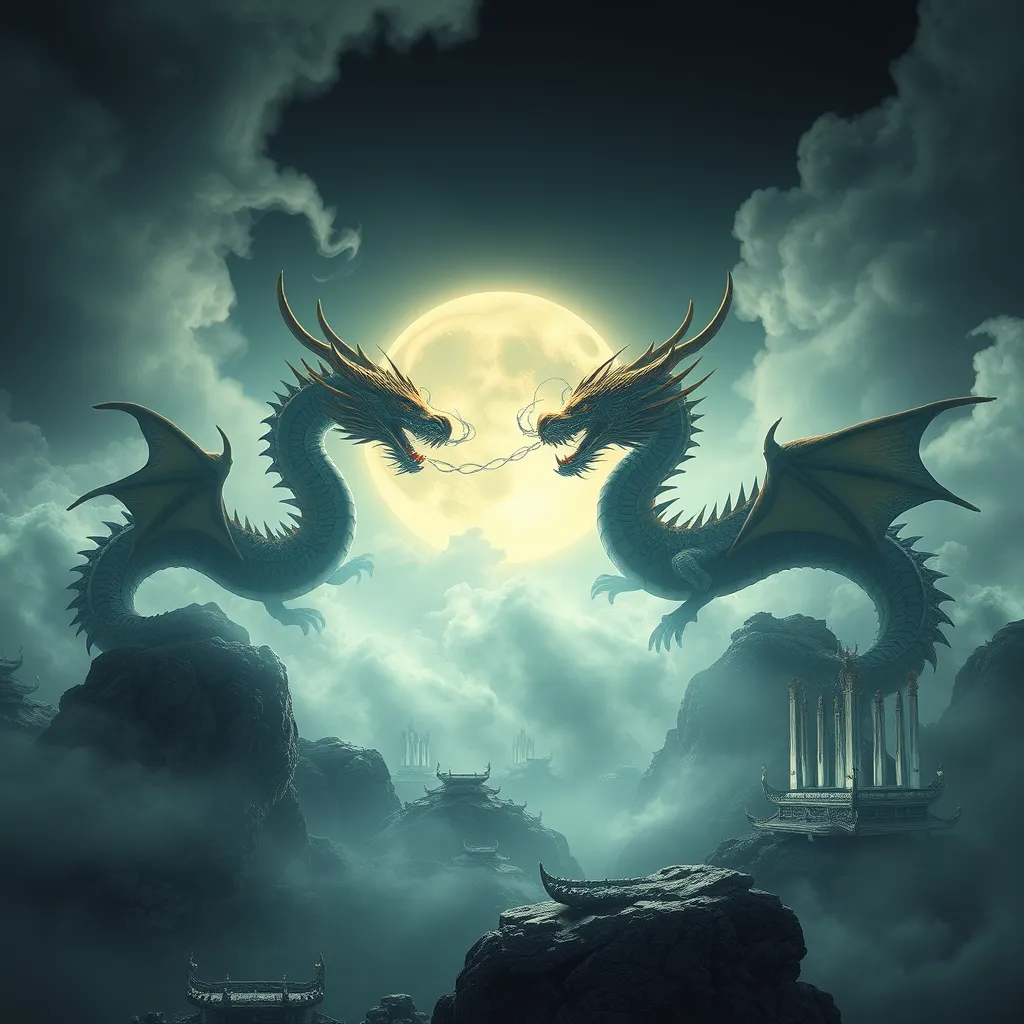The Lamia’s Legacy: Understanding the Impact of the Serpent Woman on Society and Culture
I. Introduction
The Lamia is a captivating figure in mythology, often depicted as a serpent woman who embodies both beauty and monstrosity. In various cultures, she is a complex character that represents different themes and moral lessons. The significance of Lamia transcends her mythical origins, influencing literature, art, and societal norms throughout history.
This article aims to explore the multifaceted legacy of Lamia, examining her historical origins, symbolism, representations in various cultural contexts, and her impact on contemporary society.
II. Historical Origins of the Lamia Myth
A. Ancient Greek mythology and the story of Lamia
In ancient Greek mythology, Lamia was once a beautiful queen of Libya, cursed by Hera to become a monster that preyed on children. Her tragic backstory and transformation into a child-eating demon highlight themes of jealousy and vengeance. Lamia’s character has been interpreted in various ways, serving as both a warning against female desire and a reflection of the societal fears surrounding motherhood and femininity.
B. Variations in different cultures
While Lamia’s story originates in Greek mythology, she has been adapted in different cultures:
- Roman Interpretations: In Roman literature, Lamia is often depicted as a seductress who lures men to their doom.
- African Folklore: Similar serpent-like figures appear in various African myths, often representing danger and temptation.
- Middle Eastern Mythology: In some Middle Eastern cultures, Lamia is likened to Lilith, a figure associated with female independence and danger.
C. Evolution of the Lamia narrative over time
Over the centuries, the Lamia narrative has evolved, adapting to the values and fears of different societies. From a monstrous figure to a symbol of feminine rage and empowerment, Lamia’s story reflects changing attitudes towards women and sexuality.
III. Symbolism of the Serpent Woman
A. The serpent as a symbol in mythology and its meanings
The serpent is a powerful symbol in many mythologies, often representing:
- Transformation: The shedding of skin signifies renewal and change.
- Duality: Serpents are both revered and feared, embodying the contrast between good and evil.
- Feminine Power: In many cultures, serpents are associated with feminine energy and sexuality.
B. Gender and sexuality in the representation of Lamia
Lamia’s character presents a complex interplay of gender and sexuality. She embodies the fear of female sexuality and the consequences that come with it, challenging societal norms. Her transformation into a monster can be viewed as a punishment for her desires, reflecting historical anxieties surrounding female autonomy.
C. The duality of beauty and monstrosity in Lamia’s character
Lamia’s beauty is juxtaposed with her monstrous nature, creating a duality that fascinates and repulses. This contrast serves as a metaphor for the societal perception of women, often seen as both alluring and dangerous.
IV. The Lamia in Literature and Art
A. Depictions of Lamia in classical literature
One of the most famous literary depictions of Lamia comes from Ovid’s “Metamorphoses,” where she is portrayed as a tragic figure, lamenting her lost children and her transformation. This portrayal emphasizes her sorrow and the injustices she suffers.
B. Influence of Lamia on modern literature and pop culture
In modern literature, Lamia has inspired various authors who reimagine her character in different contexts, exploring themes of empowerment and revenge. Her legacy can be seen in:
- Fantasy novels where she represents the archetype of the seductive villain.
- Contemporary poetry and novels that delve into themes of loss and femininity.
C. Artistic representations and interpretations of the Lamia in visual arts
Artists throughout history have depicted Lamia in various forms, often emphasizing her dual nature. From classical sculptures to modern paintings, Lamia continues to be a source of inspiration, representing the complexities of womanhood.
V. Psychological and Sociological Interpretations
A. Analysis of the Lamia as a cultural archetype
Psychoanalysts and cultural theorists view Lamia as an archetype representing the shadow aspect of femininity—the fears and desires that society often suppresses. She embodies the struggle between societal expectations and personal identity.
B. The role of fear and fascination in the Lamia narrative
The Lamia narrative evokes a mix of fear and fascination, reflecting society’s complicated relationship with female power. This duality engages audiences, prompting them to confront their own fears and desires.
C. The impact of Lamia on societal views of femininity and empowerment
The story of Lamia has significant implications for societal views of femininity. As a figure of both monstrosity and empowerment, she challenges traditional gender roles and encourages discussions about female autonomy, desire, and revenge.
VI. Lamia in Contemporary Culture
A. Reimagining the Lamia in modern media
In contemporary media, Lamia has been reimagined in various formats:
- Film: Movies often portray her as a villainess with complex motivations.
- Television: Series incorporate Lamia-like characters to explore themes of empowerment and identity.
- Video Games: Lamia-inspired characters serve as powerful female protagonists or antagonists.
B. The resurgence of interest in mythological figures in popular culture
The revival of interest in mythological figures like Lamia reflects a broader cultural trend where ancient narratives are reinterpreted to address modern issues, particularly regarding gender and identity.
C. The role of Lamia in feminist discourse and reclaiming narratives
Lamia’s character has become a focal point in feminist discourse, encouraging discussions about reclaiming narratives around female monstrosity and sexuality. Modern interpretations seek to empower rather than vilify her, presenting her as a symbol of strength and resilience.
VII. Cross-Cultural Comparisons
A. Similar serpent-like figures in other mythologies
Several other mythological figures share similarities with Lamia:
- Lilith: Often depicted as a night demon, she embodies female independence and defiance.
- Medusa: A Gorgon who reflects the duality of beauty and monstrosity, often punished for her beauty.
B. The universal themes reflected in the Lamia legend
The Lamia legend resonates across cultures, reflecting universal themes of:
- The fear of the feminine.
- The consequences of desire and jealousy.
- The struggle for identity and autonomy.
C. The impact of globalization on the reinterpretation of the Lamia myth
Globalization has facilitated the exchange of cultural narratives, leading to new interpretations of the Lamia myth. As cultures interact, Lamia’s story is adapted to reflect contemporary issues and values, making her a timeless figure in modern storytelling.
VIII. Conclusion
A. Summary of Lamia’s enduring legacy in society and culture
Lamia’s legacy is a rich tapestry woven through history, literature, and art, embodying themes of power, desire, and the complexities of femininity. Her story continues to evolve, resonating with audiences across generations.
B. Reflection on the importance of mythological figures in understanding human experience
Mythological figures like Lamia provide valuable insights into human experiences and societal values. They serve as mirrors reflecting our fears, desires, and cultural narratives.
C. Final thoughts on the relevance of the Lamia today and its implications for future narratives
As society continues to grapple with issues of gender and identity, the Lamia myth will likely remain relevant, offering a lens through which to explore the complexities of the human experience. Her story encourages us to confront our fears and reclaim narratives that empower rather




